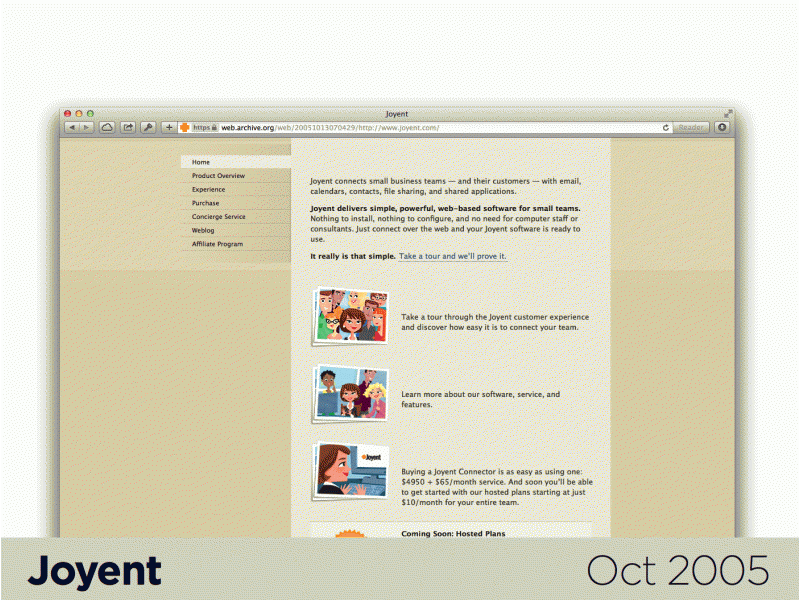Rhetoric and Speech in the Clinton Administration.

This post was originally published on Medium in 2013.
Below is an abbreviated version of an essay I wrote on Bill Clinton, his administration, and how rhetoric saved his presidency. Before the essay though, I wanted to include some choice quotes I found in my research that didn’t make it into the paper (bolding is my addition).
Any president would rather receive and reply as Clinton did at a town hall meeting:
Q: Hello, Mr. President—President Clinton. My question is, my birthday is tomorrow and I’m twelve years old tomorrow, and my question is, what kind of future am I going to have in store for me and the country?
The President: That’s a neat question, isn’t it? (Laughter) I think you’ve got a very bright future. The world you will live in will be freer of the threat of total destruction than any world we’ve ever known.
The hottest moment of the town meeting came when the president abandoned his usual empathic style and directly confronted a questioner.
Questioner: Mr. President, in 1993 when interest rates were declining, your administration took credit for that. But now both long- and short-term rates are higher than when you took office. Will your administration now take responsibility for higher rates?
The President: Why do you think they went up?
Questioner: Well, I’m asking you.
The President: I’m asking you. You asked me to take responsibility, so I ask you why. They plainly went down after we declared our deficit reduction package. That’s why they went down. They have gone up, I think, for two reasons, maybe three.
Oral history interviews confirm that Clinton often did work on speeches up to the very moment of their delivery—and indeed would often extemporize while speaking. The story of the teleprompter and the healthcare speech is recounted in George Stephanopoulos, “All Too Human: A Political Education”. The wrong speech was initially loaded into the teleprompter], an accident brought on by the fact that the text was being worked on so late that no time was left to check the process. For several minutes, Clinton was forced to speak before a national television audience while an alphabet soup of verbiage spooled past his eyes on the teleprompter screens.
Peggy Noonan takes us closer to the answer to the Clinton paradox:
“Never tongue-tied and never eloquent—six years into his presidency, his only candidates for Bartlett’s are ‘I didn’t inhale’ and ‘The era of big government is over’—his easy facility is a two-edged sword. While it suggests a certain command, it also highlights Clinton’s prime perceptual problem: that he is too fluid, too smooth, like a real estate salesman talking to a walk-in with a Rolex.
Now, onto the essay.
President Bill Clinton is a case study in the power of the rhetorical presidency.
Richard Neustadt, in his Presidential Power and the Modern Presidents, describes presidents as formidable leaders who use their power to persuade. Yet Bill Clinton was not a towering, unopposed president. He served at a crossroads—the Cold War had just ended; the Internet, cable news, and consequent shorter news cycles were just becoming mainstream; and during his tenure Congressional opposition threatened the presidency in unprecedented ways.
Compounding these larger trends, Clinton suffered what most pundits believed would be a debilitating scandal, yet left the office with one of the highest approval ratings of any president in modern times.
“How can a man lie multiple times, cheat on his wife, commit perjury, and become one of the most popular presidents of recent history?”
Clinton surmounted these challenges through his extraordinary use of presidential rhetorical power. To his supporters, Clinton seemed to have the magical ability to relate to anyone; to his opponents, Clinton’s magic was the seduction of the American people. The Clinton presidency demonstrates the importance of the Presidential bully pulpit—while his rhetoric shifted from at first attempting to directly reach citizens to eventually acknowledging the press' role in spreading his message, Clinton’s legacy survived because he converted his rhetorical talent into political capital.
Clinton’s rhetoric was unusually powerful because of its conversational style. As Clinton’s head speechwriter Michael Waldman remembers, “his strength was never soaring rhetoric”—thirty minute speeches were reduced into half the time, and new speechwriters were warned he took “Hemingway [and turned it] into Faulkner. Rather, Clinton’s powerful gift at communicating grew from the intensity of his connection to the audience before him….He might dutifully read along with the prepared draft. Then, when he sensed the listeners were with him, or were resisting, he would leave the text, start dropping his consonants, and loop around and around the subject, trying to persuade the audience until he had won the point.” After winning the presidency largely based on his rhetorical gifts in town halls and conversations with voters, Clinton was poised to benefit from and depend on rhetoric once in office.

President Clinton’s first 100 days in office aimed to leverage this strength. Under Clinton, “speechwriters were once again privy to policymaking and political strategy,” reversing a pattern by previous presidents of pushing speechwriters out of the decision-making process. Speechwriters reported directly to the Chief of Staff and the President himself. Clinton gave 550 speeches in a typical year—nearly double the 320 President Reagan gave per year. In the two years between his inauguration and the first midterm elections, Clinton traveled to almost two hundred town halls across the country.
These events were meant to sell the President’s healthcare bill, his vision for the country, and the Democratic Party. Clinton thrived in the town hall environment—the “relaxed questions he received” there allowed his enthusiasm for “spontaneous give-and take” to shine through. Clinton’s rhetorical strategy was to “bypass traditional journalist mediation between leaders and citizens” because he believed “journalists were gaining more influence over political and campaign agendas.” Given Clinton’s rhetorical talent, his administration’s strategy hoped to forge connections with voters and circumvent conventional media.
Even after news organizations helped spread Clinton’s campaign message, the new administration failed to appreciate how conventional media helps presidents communicate once elected. President Clinton, like Presidents Eisenhower, Nixon, Carter, and Reagan before him, held the press at arm’s length and mainly spoke to press at more formal, controlled events. In a stunning rebuke of conventional media, Clinton held a question and answer session with schoolchildren visiting the White House before he ever appeared before the White House press corps. Within three weeks of taking office, Clinton had spoken with live studio audiences in four separate cities via satellite, but had still not held a formal press conference.
When asked by the Radio and Television Correspondents Association why he shied away from press conferences, Clinton answered, “Because Larry King has liberated me from you by giving me to the American people directly.”
The President opted for more intimate events, like one-on-one interviews with Larry King or town hall meetings, that allowed his unique talent for casual rhetoric to dominate.
This strategy unexpectedly backfired for the Clinton administration. His signature healthcare bill failed in Congress, his poll numbers dropped, and Republicans took control of the House of Representatives in the midterm elections. Clinton’s favored town hall format was quickly abandoned as “the format increasingly became a forum for negative and confrontational interactions between citizens and the president, providing fodder for negative national news.” Yet despite these defeats, “Clinton never gave up on the idea that all he needed was a few more speeches, or a slightly better message. ‘I’ve got to…spend more time communicating with the American people,’ the President said in a 1994 interview….It seems never to have occurred to him or his staff that his basic strategy may have been inherently flawed.”
Clinton initially blamed his waning support on the negative press he had been receiving, not on his rhetorical strategy. When asked by Rolling Stone how he would respond to a disappointed supporter, Clinton responded angrily, “that man has a false impression of me because of the way this administration has been covered. It is wrong. I have fought my guts out for that guy, and if he doesn’t know it, it’s not my fault.” In June of 1993, Clinton realized “the level of acrimony” between his administration and the press was self-defeating—“clearly harm was being done.” With the public losing faith in his leadership, he brought in David Gergen—who had helped Presidents Nixon, Ford, and Reagan with their communications strategies—to forge a new path.

If Clinton’s first 100 days are the story of his rhetorical strategy failing to understand political and media realities, the Monica Lewinsky scandal is the story of the media failing to understand the power of Clinton’s rhetoric. Just days before the State of the Union, news of the affair broke in the press. According to Clinton’s head speechwriter at the time, the President and his administration decided he would not address the scandal at all in his speech; they wanted Clinton to use his rhetoric to put the administration back on message. And indeed, “Clinton went on to save his presidency with a rousing State of the Union address in which he secured public favor by sternly demanding that Congress ‘save Social Security’.”
The resulting post-speech approval boost—by some measures, as much as 16%—carried him through the scandal to the end of his administration. In fact, Clinton’s approval rating never fell below 60% during the scandal and hit a high of 73% twice—once on the day the House voted to impeach Clinton, and again when the Senate voted to acquit. Despite the fact that nearly half of all stories about the Clinton administration in the three months after the scandal broke focused on the affair, the scandal provided a reason for additional coverage of the administration, which often included other positive coverage of Clinton’s policies and agenda. By staying on message, the Clinton White House leveraged the negative press to more frequently present their issues.
With the scandal’s spotlight on him, Clinton used the media frenzy to showcase his rhetorical power, this time in conjunction with the press instead of in opposition to it. The day before the State of the Union, Hillary Clinton and Vice President Al Gore hosted a press conference on afterschool education programs. At the last minute, speechwriters were told the President would deliver remarks on education at the gathering, with the unstated goal of making a statement about the Lewinsky scandal as well. They hurriedly “spliced the entire education section straight out of the State of the Union address and turned it into a statement.” Those remarks—containing the President’s education vision for the next year—were presented to a live audience “larger than for the State of the Union itself.” The President used the scandal as a soapbox to elevate issues that affected the American people, and they in turn rewarded him with unwavering approval ratings above 60%.
Despite initially miscalculating how to deliver his rhetoric to the American people, Clinton’s rhetoric successfully elevated the office of the president and inspired the American public. He successfully used his rhetorical talent to craft a rhetorical presidency that furthered his administrative and legislative goals, a success reflected in unwaveringly high approval ratings throughout the Monica Lewinsky scandal. Once he applied rhetoric through existing media channels, rhetoric proved to be one of his most powerful assets.
“It was a new kind of presidency, less dependent on legislation, more rooted in a president’s unique power to act and to speak. With his stream of speeches and announcements, he was trying, bit by bit, to restore public confidence in government, to show that it could get things done… This will most likely be his lasting legacy: redefining the role of government and then successfully convincing the public to share that vision.”
To President Clinton, the rhetorical presidency was the presidency.
Works Cited
Denton, Robert E., and Rachel L. Holloway. Images, Scandal, and Communication Strategies of the Clinton Presidency. Westport, Conn.: Praeger, 2003. Print.
Dorsey, Leroy G. The Presidency and Rhetorical Leadership. College Station: Texas A & M University Press, 2002. Print.
Friedman, Jeffrey. “A “Weapon in the Hands of the People”: The Rhetorical Presidency in Historical and Conceptual Context.” Critical Review. N.p., n.d. Web. 14 Oct. 2013. www.criticalreview.com/crf/pdfs/Friedman_19_2_3.pdf
Klein, Ezra. “The Unpersuaded: Who Listens to a President?.” The New Yorker. N.p., 19 Mar. 2012. Web. 13 Oct. 2013. [www.newyorker.com/reporting…
Renshon, Stanley Allen. The Clinton Presidency: Campaigning, Governing, and the Psychology of Leadership. Boulder: Westview Press, 1995. Print.
Waldman, Michael. POTUS Speaks: Finding the Words that Defined the Clinton Presidency. New York: Simon & Schuster, 2000. Print.
In a speech to the Democratic Nation Committee in 1999, he waxed poetic:
“And let me just close with this story. I want to tell you a story that I thought about that I told the folks at home when I went to dedicate my birthplace. Last year I had a 91-year-old great uncle who died. He was my grandmother’s brother. And I loved him very much, and he helped to raise me when my mother was widowed and went off to study so she could be a nurse anesthetist, and my grandparents were raising me.
And this old man and I were close from the time I was born. He and his wife were married for over 50 years, and she came down with Alzheimer’s. And they had one of these old-fashioned houses with gas stoves, so they had to take her to the local nursing facility that was tied to our nursing home in this little town because they were afraid she’d turn on the stove and forget about it and blow the house up. We can laugh—we all laughed about it. It’s okay to laugh. I’ve lost two relatives to Alzheimer’s. You have to laugh to keep from crying half the time…"
Two paragraphs, 224 words, and a lot of laughter later, Clinton was still at his story, with no end in sight. I cite the rest of the speech not for its significance but for its pointlessness:
“So I went to see him one night, about 10 years ago, after his wife went into this nursing home. And they’d been married over 50 years. And the first 20 or 30 minutes we talked, all he did was tell me jokes and tell me stories and think about the old days. And I was walking out and for the only time in our life, he grabbed me by the arm. And I looked around and he had big old tears in his eyes. And I said, ‘This is really hard on you, isn’t it.’ And he said this, he said, ‘Yes, it is. But,’ he said, ‘you know, I signed on for the whole load, and most of it was pretty good.'
When you were up there singing ‘Stand By Me’ tonight and I thought about how the American people have stood by me through thick and thin, I would just like to say to all of you, when I talk about community, that’s what I mean. [Applause] Now, wait a minute. You don’t have to sit down, because I’m nearly through. [Laughter] Don’t sit down. Don’t sit down. I’m nearly through. Here’s the point I want to make: The reason I wanted you to come here tonight, the reason I’m thankful for your contributions, the reason I’m thankful for what you do is, this country has got to get over believing that our political life is about beating each other up and hurting people, instead of lifting people up and bringing them together. That is what I’ve tried to do. That is what we stand for. And if we remember that, we’re going to do just fine in the 21st century.
Thank you, and God bless you."
 zmh.org
zmh.org


















